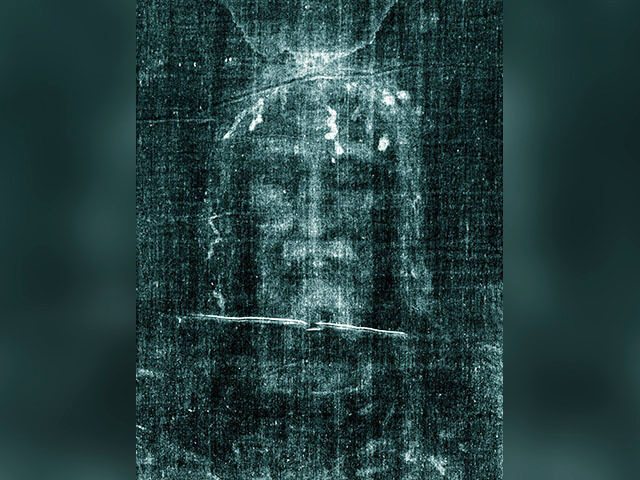A team of scientists analyzing the Shroud of Turin, a large piece of cloth believed by many to be the burial cloth of Jesus Christ Himself, have determined that the shroud does indeed date back to the time of Jesus’ life.
Using a new technique involving wide-angle X-rays, the Italian researchers at the Institute of Crystallography of the National Research Council concluded that the material used to make the cloth was manufactured around the time Jesus walked the Earth – about 2,000 years ago.
First displayed before the public in the 1350s, the Shroud of Turin was presented as the burial cloth Joesph of Arimathea used to wrap the broken body of Jesus Christ after crucifixion and death on the Cross.
However, in the 1980s, scientists cast doubt on this belief after a team of researchers examined the shroud and declared that it dated back only to the Middle Ages—hundreds, if not over a thousand years after Christ’s death.
Now, with more modern and advanced testing procedures contradicting the claims of the scientists who tested the cloth in the 1980s, there’s renewed belief that the fabric that contains the bloodstained imprint of a bearded man with his arms folded is indeed the burial shroud of Christ Himself.
The wrapping of Jesus’ body in a burial cloth is clearly outlined in Scripture.
According to Matthew 27: 59-60, “Then Joseph [of Arimathea] took the body and wrapped it in a new linen cloth. He put Jesus’ body in a new tomb that he had dug in a wall of rock. Then he closed the tomb by rolling a very large stone to cover the entrance. After he did this, he went away.”
The shroud itself tells a story consistent with the Passion narrative found in the four canonical gospels, detailing Jesus’ suffering and death. The cloth is marked with bloodstains consistent with the back and shoulder wounds Jesus suffered from His scourging, in addition to the presence of thorn marks on the head.

An official gestures as he speaks next to a facsimile of “The Shroud of Turin” at the Cathedral of Malaga, on February 20, 2012. AFP PHOTO/ JORGE GUERRERO. (Jorge Guerrero/AFP via Getty Images)
The different methodologies used by the research teams who have analyzed the shroud reflect the changes and advancements in the processes used to authenticate ancient materials.
In 1988, researchers analyzed a piece of the shroud using a carbon dating system. This technique relies on studying the decay of a radioactive isotope of carbon (14C) to measure time and date objects containing carbon-bearing material.
Using this system, the 1988 researchers determined that the shroud was manufactured sometime between 1260-1390 AD.
In the most recent study, the Institute of Crystallography of the National Research Council used wide-angle X-ray scattering (WAXS).
“The technique measures the natural aging of flax cellulose and converts it to time since manufacture,” the Daily Mail reports. “The team studied eight small samples of fabric from the Shroud of Turin, putting them under an X-ray to uncover tiny details of the linen’s structure and cellulose patterns.”
Temperature and humidity factors led researchers to believe the shroud had been kept in temperatures that averaged 72.5 degrees Fahrenheit and 55 percent humidity for 13 centuries before being brought to Europe.
Scientists then compared the cellulose breakdown in the shroud to other fabrics dating back to 1st-century Israel and found them to be a match.
Conversely, none of the fabrics manufactured between 1260 and 1390 AD, the timeframe given by the 1988 researchers, were a match.
Researchers then took aim at the testing methodologies of the 1988 study, saying it should be viewed as invalid because fabrics become contaminated over time, rendering exact carbon dating difficult at best.
“If the cleaning procedure of the sample is not thoroughly performed, carbon-14 dating is not reliable,” said the study’s lead author, Dr. Liberato De Caro.
“This may have been the case in 1988, as confirmed by experimental evidence showing that when moving from the periphery towards the center of the sheet, along the longest side, there is a significant increase in carbon-14.”
Controversy has raged over the shroud since its unveiling, and despite the breakthrough findings of the Italian researchers, that’s unlikely to end. However, it’s getting harder and harder for critics to explain away this cloth that we now know was manufactured in the Middle East at the time of Jesus’s life and just happens to contain bloodstains corresponding to the Passion narrative in the Bible.
The Shroud of Turin has been preserved in the royal chapel of the cathedral of San Giovanni Battista in Turin, Italy, since 1578.

COMMENTS
Please let us know if you're having issues with commenting.